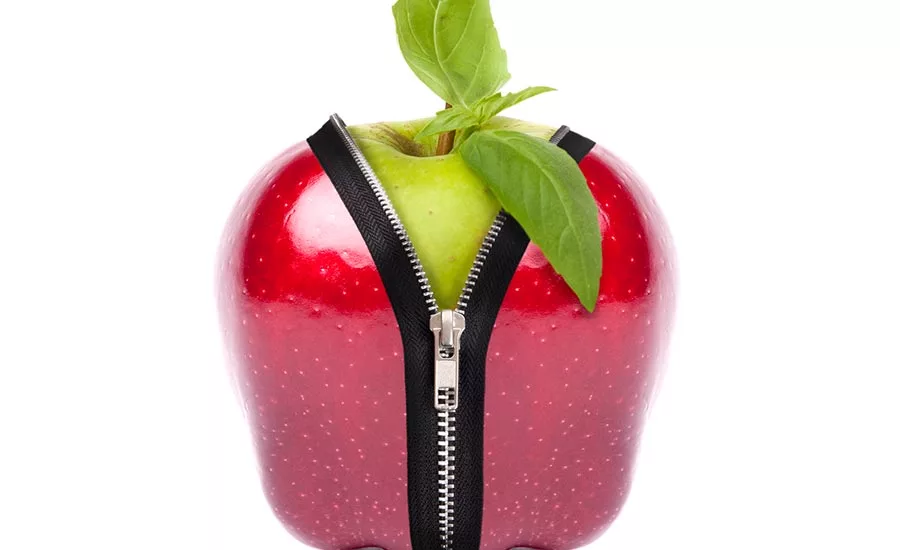Food fraud
Combating the growth of fake food
Food is now the fourth most valuable counterfeit market, and foods such as olive oil, honey, fish, vinegar, vanilla and coffee top the list.

When processing and packaging professionals discuss counterfeit goods, pharmaceuticals are usually the first thing that comes to mind. But when it comes to fraud, food shouldn’t be ignored.
As brand manufacturers continue to source from an ever-growing list of ingredients and suppliers, food is now the fourth most valuable counterfeit market, according to the 2016 Brand Protection and Product Traceability Market Research Report.
So while it’s perhaps not intuitive, counterfeiting is an enormous problem with certain foods such as olive oil, honey, fish, vinegar, vanilla and coffee topping the list.
Report producer PMMI, The Association for Packaging and Processing Technologies, reached this conclusion after surveying brand manufacturers, industry experts and technology suppliers who shared their experiences complying with traceability regulations in the food, beverage and pharmaceutical industries.
Various government and border patrol sources agree that calculating the cost of counterfeit goods on a global scale is difficult at best.
While an exact number is nearly impossible to nail down, the Organization for Economic Co-Operation and Development (OECD) estimates the global market in cross-border trade in counterfeit goods lies between $461 billion and $1.7 trillion.
The globalization of the food supply chain has caused this number to leap by 85 percent over 2008 estimates, and experts believe North America accounts for 50 percent of the total growth in the global anti-counterfeit food packaging market.
Looking for quick answers on food safety topics?
Try Ask FSM, our new smart AI search tool.
Ask FSM →
The global anti-counterfeiting and brand protection market, to stem the tide over the next five years, is forecast to grow with CAGRs ranging from 12.8 to 16 percent. To put that in perspective, this expansion of the global anti-counterfeiting market will outpace the overall market segment growth of the food, beverage and pharmaceutical industries by roughly two to three times in the next five years.
In the U.S. the largest effort to secure the food supply chain is the Food Safety Modernization Act (FSMA). While large food companies and OEMs are well on their way toward compliance with FSMA, many food companies are still struggling to understand all aspects of the new law.
According to the most recent FSMA Update Report by PMMI, fresh fruit and vegetable processors and small food companies are expected to have the most difficulty with compliance. With only limited regulatory oversight before FSMA came into effect, these businesses have been increasing investments in new equipment to help meet compliance.
Additionally, small food companies and farms are challenged with overhead costs while those that source ingredients from foreign-based suppliers must now ensure that their providers comply with the law’s food supplier program.
While FSMA attempts to ensure food is real, as advertised and safe, a good portion of best brand protection practices must occur throughout the food supply chain. Checks and balances are necessary to close the gaps when tracking, authenticating and locating products.
In most instances, these solutions will go far beyond the idea of a simple fix, creating added layers of supply chain security.
A fully integrated track-and-trace solution includes:
- A layered suite of solutions
- A fully integrated infrastructure — inks, vision, data collection and print technologies.
- Flexible solutions adaptable to changing needs
- A centralized, universal system to track product movement
- Data that is readily retrievable and readable at every stage of the supply chain
- Full integration for immediate data retrieval during a recall
Within the layered approach to brand protection are overt — barcodes, holograms, watermarks, embossing and etching — and covert technologies — taggants, UV, infrared and fluorescent inks, Smart technology and radio frequency identification (RFID).
The newest development in brand protection for food involves new packaging that monitors food freshness by touch. A small bioactive sheet of gelatin is placed in the corner of the package; when the gelatin is smooth, the food is safe, but when it becomes rough and bumpy to the touch, the food has spoiled.
This technology prevents fraudulent or subpar food from masquerading as a manufacturer’s brand. This tactile expiry date is a unique way of engaging the consumer with a product on an often-ignored sensory level: touch.
Processing and packaging professionals looking for the latest in brand protection and anti-counterfeiting technology have no better option in the manufacturing-rich Northeast then at PACK EXPO East (April 16—18; Pennsylvania Convention Center), produced by PMMI.
Conveniently located in Philadelphia and within 200 miles of a third of the nation’s consumer packaged goods companies, PACK EXPO East will draw an expected 6,000 attendees and 400 suppliers of advanced packaging equipment, automation, robotics and controls, materials, containers, printing and labeling technologies.
To register, visit packexpoeast.com.
This article was originally posted on www.foodengineeringmag.com.








